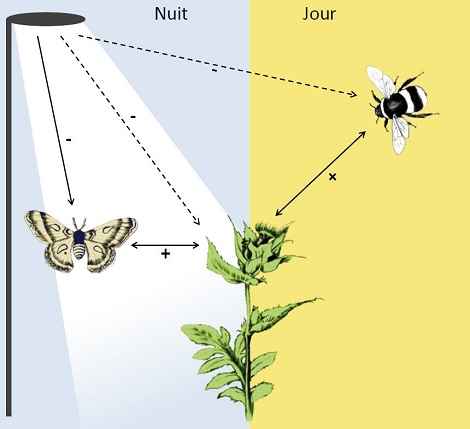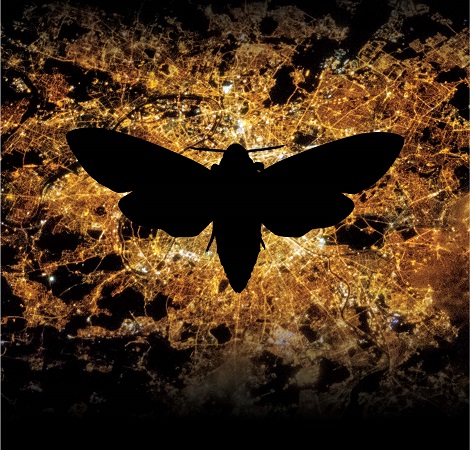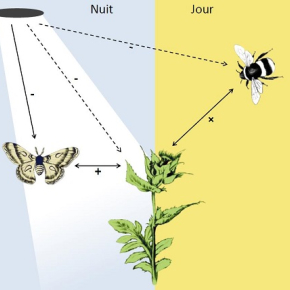
A new threat to pollination: the dark side of artificial light
A European team, including a researcher from the Centre d'Écologie et des Sciences de la Conservation (CNRS/MNHN/UPMC), has shown for the first time the direct and indirect impacts of artificial light on flower pollination. This threat to terrestrial ecosystems comes on top of other threats such as habitat loss, pesticide use, the spread of pathogens, and climate change. Their findings are published on August 3, in Nature.
Most plant species are dependent on the animal world – especially insects – for their reproduction. The decline of pollinating insects all over the world is significantly impacting crop production and the reproduction of wild plants. The rapid increase of artificial light at night, or light pollution, has recently been proposed as a new threat to terrestrial ecosystems. For the first time, a European team, including a researcher from the Centre d'Écologie et des Sciences de la Conservation (CNRS/MNHN/UPMC), has shown that light pollution disrupts nocturnal pollinators, with negative consequences for plant reproduction.
By studying 24 hours per day flowers in artificially lit meadows, the researchers observed a 62% decrease in visits by nocturnal pollinators such as moths and certain Coleoptera, as compared with meadows with no light pollution. Even more importantly, this led to a 13% decrease in production of fruits of a local plant species, Cirsium oleraceum, despite numerous visits by diurnal pollinators such as bumblebees, bees and flies.
The researchers show that the cascading effects of light pollution are not limited to plants and their reproduction but can also spread to daytime pollinators. Since light pollution reduces the reproductive success of plants on which diurnal pollinators come to feed, this could eventually lead to a decrease in available food resources for diurnal pollinators.
These findings provide novel perspectives on the functioning of plant-pollinator communities and on the complementarity between diurnal and nocturnal pollinators. In all the developed countries, pollinating insects are in decline, especially in rural environments. Their increasing scarcity could have a considerable impact on every ecosystem. This cohabitation is seriously threatened by global change and, henceforth, by light pollution.

Diagram showing the cascading effects of artificial light at night on communities of plants and pollinators. Solid arrows indicate direct effects, while dashed arrows denote indirect effects. The sign refers to the expected nature of the direct or indirect effect. The direct negative effect of light pollution on nocturnal pollinator communities is passed on to plants by reducing their reproductive success, which has repercussions on diurnal pollinators by reducing the amount of available food resources.

Night-time view of Paris from the International Space Station and moth's shadow.
Artificial light at night as a new threat to pollination, Eva Knop, Leana Zollera, Remo Rysera, Christopher Gerpea, Maurin Hörlera, Colin Fontaine. Nature, August 2017.


